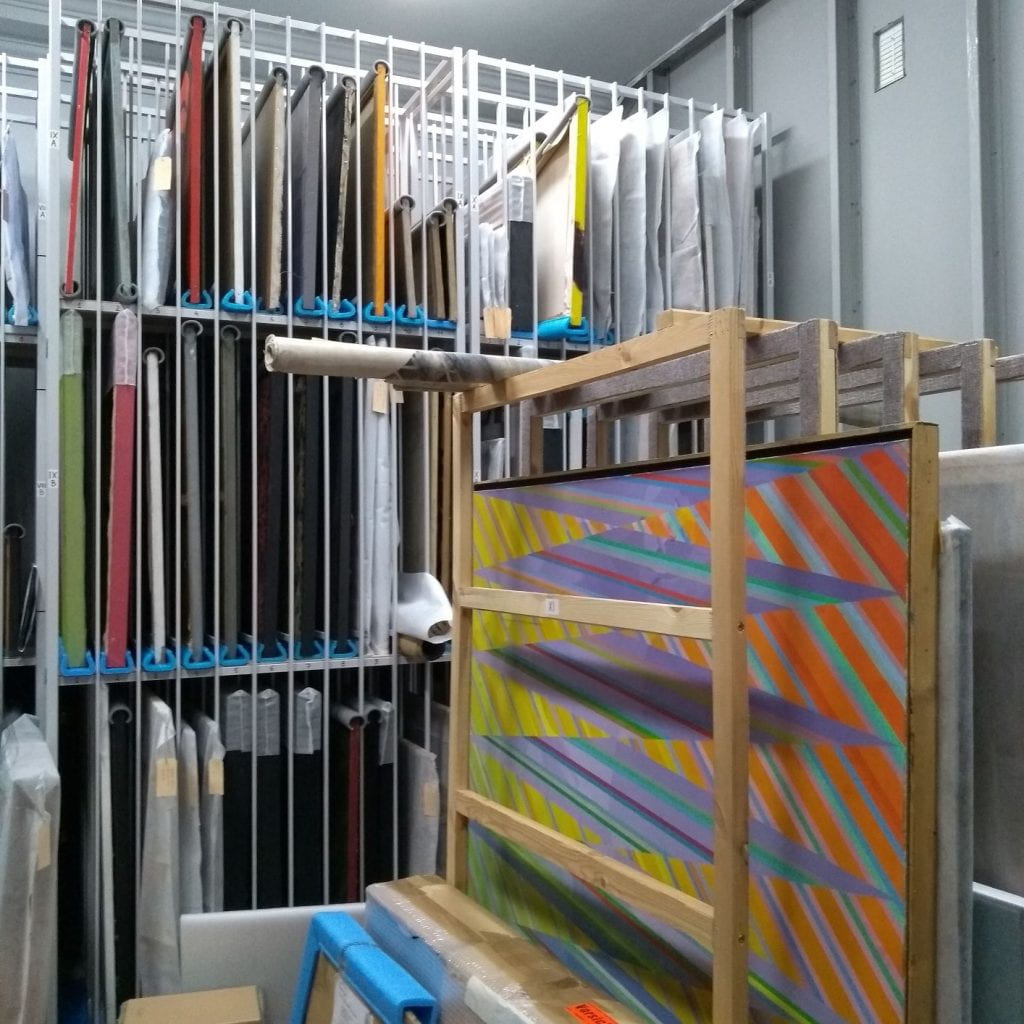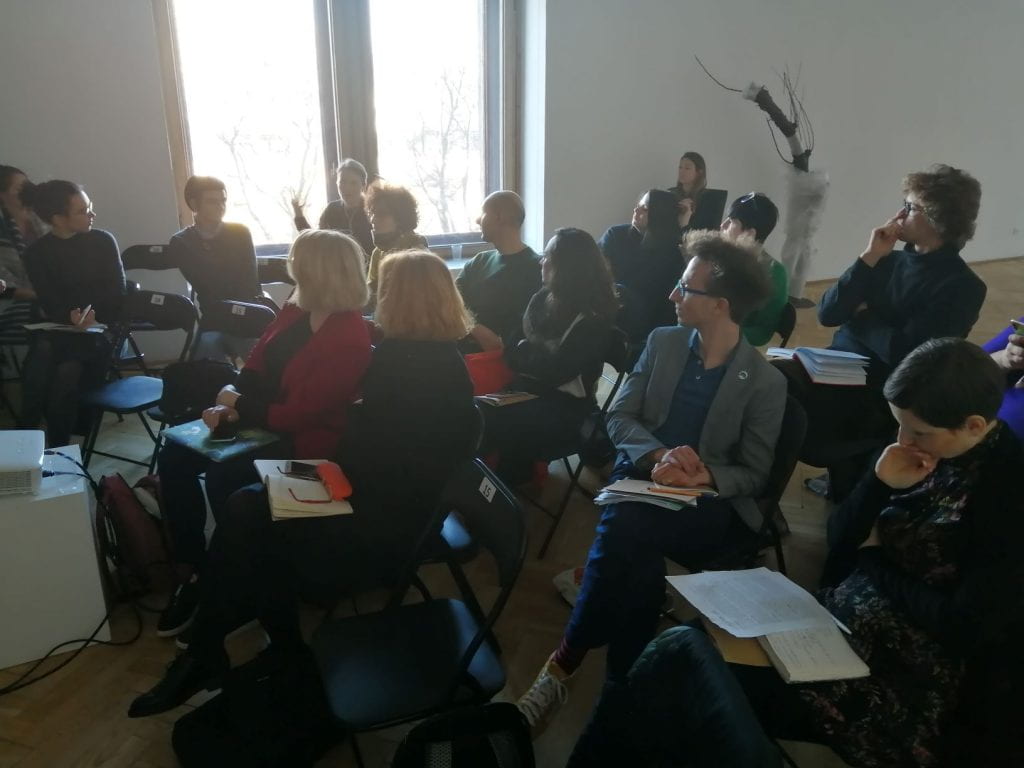Church Art in the Palace of Culture and Science
By editorial, on 3 March 2020
Ivana Bago
First thing in the morning was the ideal time to visit the famous Palace of Culture and Science, built in 1955 on the model of the “Seven Sisters,” a group of skyscrapers built under Stalin in Moscow. We were there to visit the exhibition and storage spaces of the Studio Teatr Gallery, but we also used the opportunity to ride the elevator and get a 778-ft-tall bird’s-eye view of Warsaw. Following the tour of the Palace and the gallery storage spaces, where we had the privilege of seeing mannequins used in the theater plays of Józef Szajna, who also directed STUDIO Theater during the 1970s. This was also the time when the STUDIO Theater Gallery was founded, as we later learned in the presentation by the gallery director, Dorota Jarecka, held in the exhibition space.
The presentation on the history and the program of the gallery was followed by a seminar on Polish art of the 1980s in Warsaw, with Dorota Jarecka and Piotr Rypson. One of the central topics of the conversation was “church art,” or a series of exhibitions that took place in churches during the post-Solidarity 1980s – an exotic and surprising topic for all who had earlier not been acquainted with the phenomenon. Jarecka, an art historian and curator who did research on the topic, protested the term “church art,” finding it misleading: not all artists who exhibited at churches were religion, and the (Catholic) church today is not what it was in the 1980s. In Jarecka’s view, what is intriguing about the phenomenon is the way that artists negotiated the exhibitions with the church and parishioners, at the same time seeking to maintain the autonomy of art. Rypson, art historian, writer and witness of the era, disagreed to an extent, reminding us that there were artists who were also genuinely interested in Christianity, as well as alternative forms of spirituality, towards which a number of priests and parishes were also open at the time. Rypson himself was more drawn to alternative culture and told us very compelling stories about the Remont gallery, a student-run space that also housed punk concerts and distributed zines, as well as a number of other relevant spaces and events in Warsaw, and beyond.
 Close
Close









